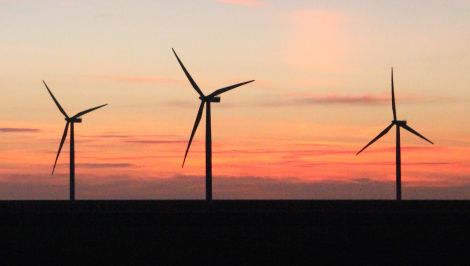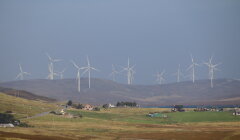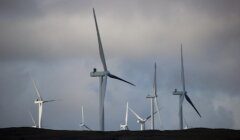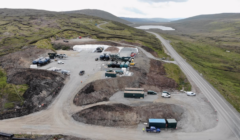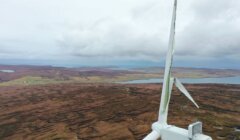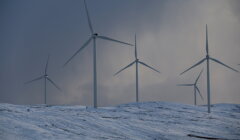Energy / Wind farm ground investigation work gets underway
GROUND investigation work for the Viking Energy wind farm is expected to start later today (Thursday) in the Weisdale area.
The drilling and digging, which was previously pencilled in for Monday (22 July) is starting earlier than planned.
The main construction of the wind farm, meanwhile, is expected to begin at the start of May – if the project wins government subsidy and an interconnector cable between Shetland and the Scottish mainland gets the go ahead.
However, it could start as early as later this year if the UK Government’s Contracts for Difference subsidy auction ends early and Viking Energy is successful.
A timeline for the construction of the wind farm has an expected finish date of 30 June 2024.
The first piece of ground investigation work is set to come in the shape of bore holes and trial pits.
The locations of two satellite compounds which will be largely be used for a helicopter to pick up cargo and take it to and from the drilling teams around the central mainland site are not yet confirmed, but it is expected they will be situated at a council quarry at Scar Quilse near Voe, and at the Hill of Scord.
Drivers in these two areas are asked to pay special attention to road signs warning of heavy plant leaving and joining the main road.
Around 50 contractors from the Glasgow based specialist BAM Ritchies will carry out the work over an anticipated three-month period, with environmental monitoring also taking place during this time.
The company has licences in place to fly a helicopter to carry personnel, as well as the equipment, to avoid the “need for frequent traversing of hillsides by tracked vehicles”.
BAM Ritiches will be based at a temporary compound at Rova Head in Lerwick.
The ground investigation work will provide information to help with the final design of access tracks and turbine bases.
Become a member of Shetland News
A timetable of milestones released by the Viking Energy team, meanwhile, maps out what the next few years could bring if the 103-turbine development gets the go-ahead.
Subject to approval, work like access junctions, compounds and a Kergord access track could take place between the fourth quarter this year and the second half of 2020.
Main work would then take place from 1 May 2020, such as developing and operating borrow pits and constructing access tracks.
Wind turbine foundations would be constructed from the start of 2021, and HV cabling would also be installed.
The turbine components would then begin to be delivered to the site in 2022, with the structures being erected that year.
The proposed electrical substation at Kergord is expected to be built through 2022.
Environmental surveys would take place throughout the entire process, while grid connection work would be undertaken between 2020 and 2024.
The Viking Energy wind farm is dependent on the project being successful in the Contracts for Difference subsidy auction, which opened earlier this year.
It also needs a subsea cable laid between Shetland and the Scottish mainland to export energy, which is likely to be installed if the Viking wind farm goes ahead.
In May it was announced that energy giant SSE would provide all future funding for the building of the wind farm if it goes ahead.
It meant that SSE’s long-standing partner Viking Energy Shetland, which is 90 per cent owned by Shetland Charitable Trust (SCT), is set to lose influence on the project as SSE invests into the 450 megawatt development.
Become a member of Shetland News
Shetland News is asking its readers to consider paying for membership to get additional perks:
- Removal of third-party ads;
- Bookmark posts to read later;
- Exclusive curated weekly newsletter;
- Hide membership messages;
- Comments open for discussion.
If you appreciate what we do and feel strongly about impartial local journalism, then please become a member of Shetland News by either making a single payment, or setting up a monthly, quarterly or yearly subscription.






